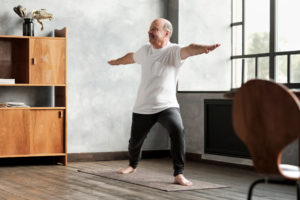
If it’s done properly.
You don’t want exercise to hurt your joints. The idea of overloading them with weights and high-impact activity can seem silly and dangerous. But painful or arthritic joints actually like movement.
The more they move, the less pain and stiffness you’re likely to experience.
Exercise with osteoarthritis and sore joints is possible; it just requires some slight modifications.
For example, lifting heavy weights can put a lot of stress on your joints. So, instead of lifting heavy, opt for lighter weights that allow you to complete more repetitions comfortably.
You can also modify body weight exercises like push-ups and squats. Performing push-ups against a wall can ease the burden on wrists, elbows, and shoulders. A shallow squat can take the pressure off the knees and hips.
Selecting low-impact activity is the way to go for cardiovascular exercise. Rather than running, jumping, or even walking on hard surfaces, try cycling, stationary bikes, ellipticals, treadmills, swimming, or aquatic workouts.
Even yoga and tai-chi are safe and worthwhile options to help with joint pain.
So, how does exercise help joint pain? By relieving stress and boosting lubrication. When your arms and legs get moving, a lubricant called synovial fluid is pumped into joints. When adequately lubricated, joints move further without pain.
Exercise also helps strengthen the muscle around joints, so they have more support and are better equipped to absorb pressure.
Before beginning any exercise regimen, talk to your doctor. You can also minimize your chances of further injury or pain by warming up first. Exercising with cold muscles can be quite risky and lead to further pain and structural damage.